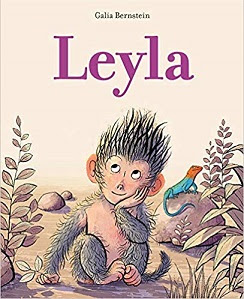
Senior Year Is Begun.
For Frank Li, only son of Korean immigrant parents, this is the year he must prove himself worthy of his parents' sacrifices--their thrift, his dad's twelve-hour shifts at The Store, as they call it--by getting the magic SAT score that will get him into
The Harvard or its equivalent. His parents are in America, but not really of it, living in a bubble, speaking Korean-English, socializing with other immigrants, whom Frank calls "The Gathering," most of whom are more successful than his father.
Each month, they ritually attend a round-robin dinner where most of the adults compete in their success stories and the teenagers hang out together. They are not really friends, but fellow second-generation Korean-Americans who call themselves "The Limbos," who complain while their parents drink too much, speak Korean and play Korean board games, and hope their children will marry each other.
But Frank has a problem. He's almost in a relationship with Brit, the perfect girl--except she's white, and he knows
Mom-n-Dad will not accept that. His older sister, who married a non-Korean, has been cast out of the family and lives on the other coast in Boston. And
Mom-n-Dad have already settled on Joy Song as his ideal match.
"You're stupid." says Joy. "Your parents are stupid."
"Your parents are stupid," I said. We laugh because it's funny, but then stop because the funny doesn't last.
But then Frank and Joy Song discover that they are in the same second-generation teen boat. Frank wants to date Brit, and Joy wants to date her boyfriend, Wu, a Chinese-American, equally unacceptable to her parents. They work out a plan; they will
pretend-date each other. Frank will pick up Joy, she'll meet up with Wu; and Frank and Brit can actually go out alone. They'll be happy, and their parents will be happy. What could go wrong?
In a plot line that Shakespeare would (
and did) love, their fake-dating plan works for a while. But life happens to interrupt their best-laid plans. Frank's dad is diagnosed with cancer, and in the hard times immediately after, Joy takes on more the role of girlfriend, and Frank realizes that he is really attracted to her, too, and in the days following the diagnosis, Frank begins to try to know his dad.
How much of my dad do I know? I realize it's not much. Dad settled into his role as breadwinner, expected me to settle into my role as disciplined academic, and we put put our noses to the grindstone and never looked up. I began to calculate our time together. A few minutes each evening. Sundays at The Store for the last couple summers. It adds up to about three hundred hours.
Who is this man who was my dad?
Is, Frank. He's not dead yet. But he will be.
In a funny, heart-rending, life-affirming, coming-of-age young adult novel, David Yoon's just published
Frankly in Love
(G.P. Putnam's Sons, 2019) deals
frankly with issues of immigration, racism (refreshingly not
all white racism) and class prejudice, the stuff of our culture these days, as in the past. As in Shakespeare's
Romeo and Juliet and in J.D. Salinger's landmark
The Catcher in the Rye,

young people have a way of running into the social complexities in the world that they must enter and find their own way through, just as their parents and the adults around them have done by learning to be the persons they want to be. As author Yoon's punning title suggests, it is not easy, but,
frankly, it's what we all have to do.
Writes the
New York Times reviewer writes,
"Yoon explores themes of racism, forgiveness and acceptance without getting earnest or preachy or letting anyone off the hook. And there's a universality to the story that cuts across cultures." Labels: Dating (Social Customs)--Fiction, Family Life--Fiction, Friendship--Fiction, Korean Americans--Fiction, Racism--Fiction (Grades 10-12)
























